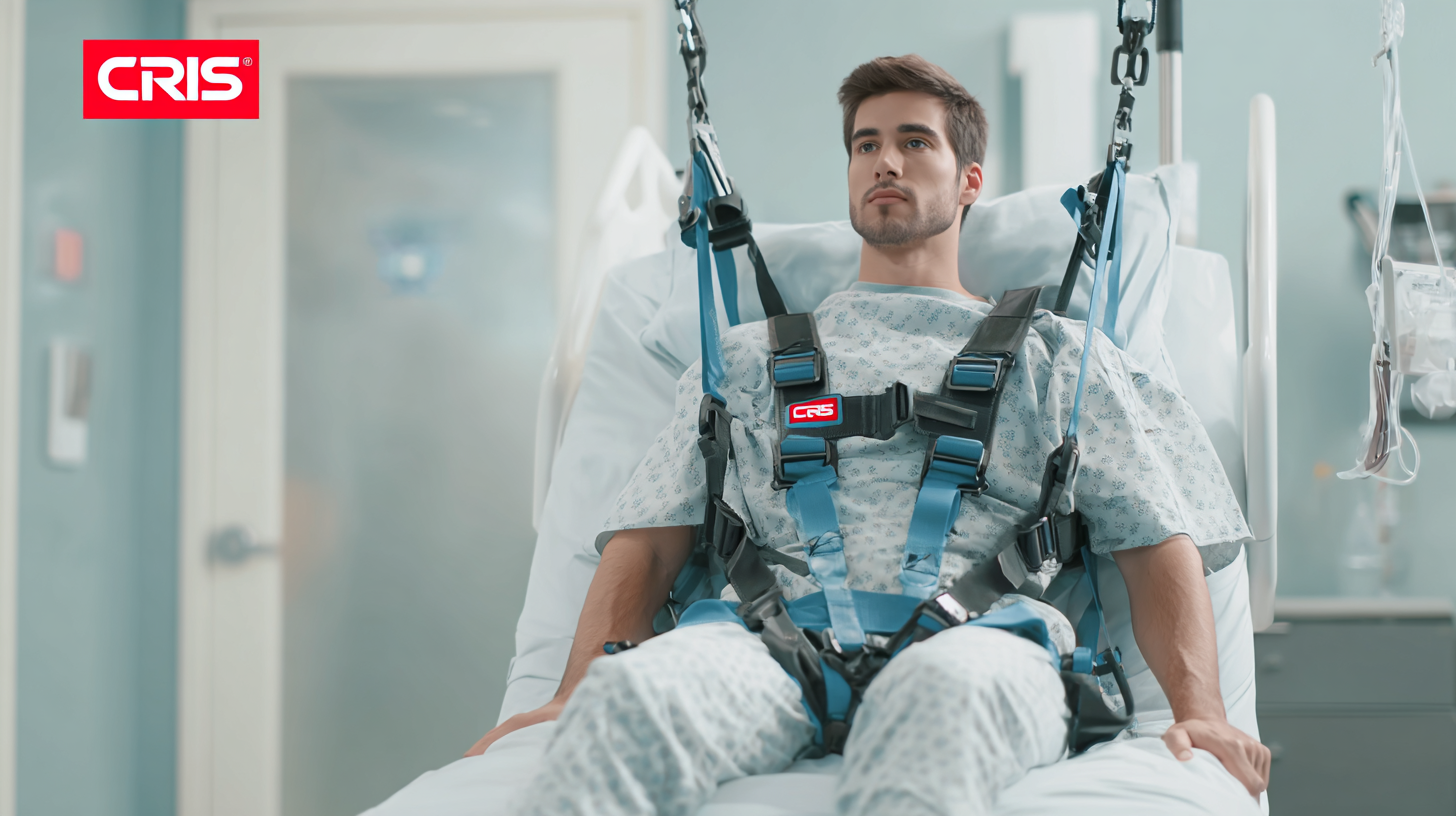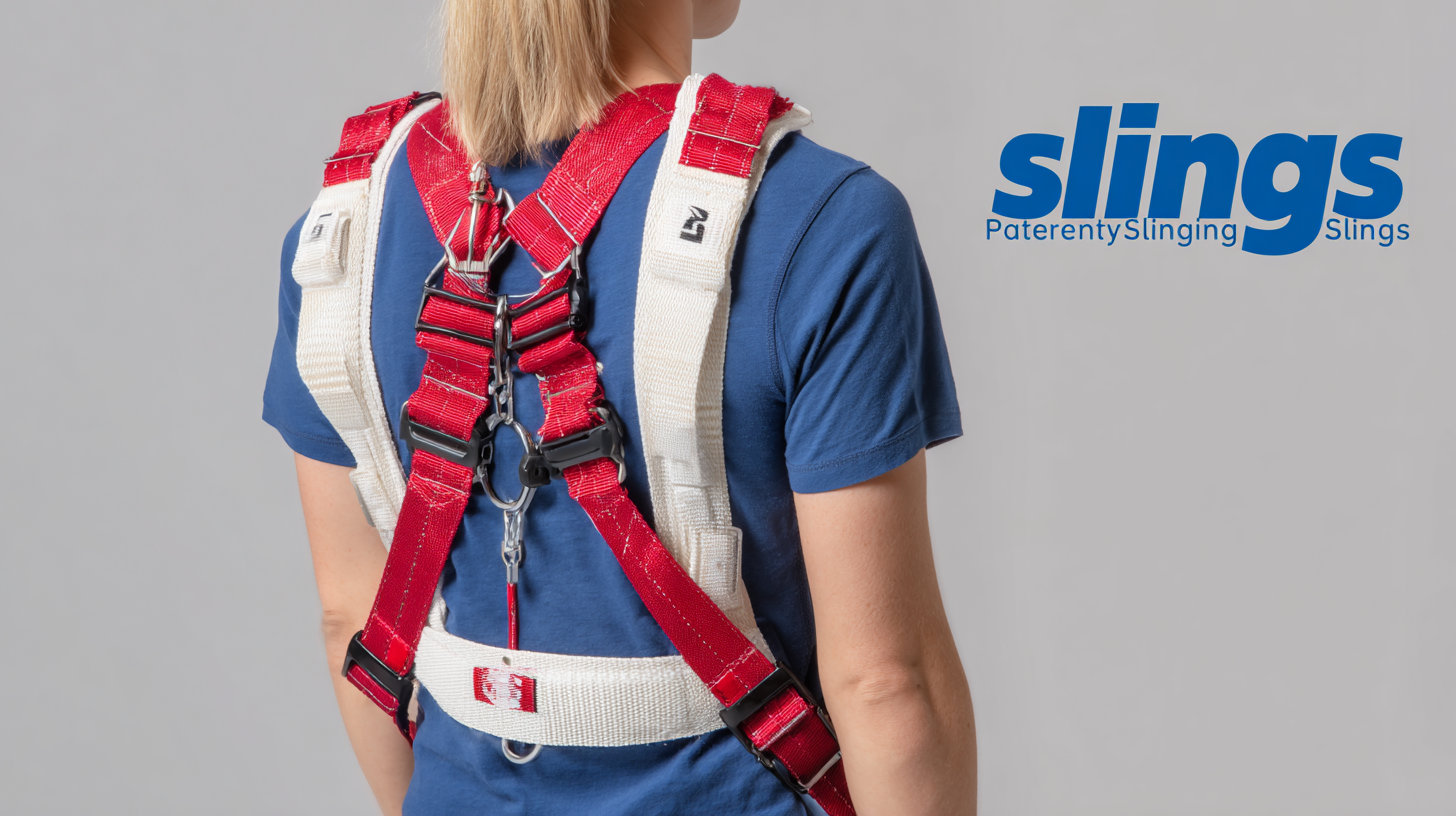Exploring Innovative Alternatives to Best Patient Lift Slings: Trends Shaping 2025 Technology
As the healthcare industry rapidly evolves, the demand for innovative solutions in patient care continues to rise, particularly in the domain of mobility assistance. One of the most critical components in this sector is the Patient Lift Sling, a tool designed to facilitate safe and comfortable patient transfers. According to a recent report by Markets and Markets, the global patient lift market is projected to reach USD 4.43 billion by 2025, growing at a CAGR of 12.1%. This growth is driven not only by an aging population but also by increasing awareness of patient safety and the need for efficient care solutions. Amidst these developments, emerging trends are shaping the future of patient lift slings, focusing on enhanced materials, ergonomics, and technological integration. As we explore these innovative alternatives, it becomes evident that advancements in manufacturing and design are pivotal to meeting the complex needs of healthcare providers and their patients globally.

Innovative Materials in Patient Lift Slings: Enhancing Comfort and Durability for 2025
 As we look toward 2025, the landscape of patient lift slings is evolving rapidly thanks to innovative materials that focus on enhancing both comfort and durability. These advancements aim to improve the quality of care for patients while also ensuring ease of use for caregivers. New materials such as moisture-wicking fabrics, antimicrobial coatings, and lightweight composites are being integrated into sling designs, promoting a healthier environment and a better user experience.
As we look toward 2025, the landscape of patient lift slings is evolving rapidly thanks to innovative materials that focus on enhancing both comfort and durability. These advancements aim to improve the quality of care for patients while also ensuring ease of use for caregivers. New materials such as moisture-wicking fabrics, antimicrobial coatings, and lightweight composites are being integrated into sling designs, promoting a healthier environment and a better user experience.
Tip: When selecting a patient lift sling, consider options made from breathable fabrics to enhance comfort and reduce skin irritation for the patient. Look for slings that offer adjustable features to accommodate different body types and needs.
In addition to comfort, durability remains a key concern in the design of patient lift slings. Innovations in material technology ensure that slings can withstand frequent use without compromising their integrity. Advanced stitching techniques and reinforced load-bearing areas are also gaining traction, providing peace of mind for both patients and caregivers.
Tip: Regularly inspect patient lift slings for signs of wear and tear, especially at stress points. Investing in high-quality materials can lead to long-term savings by reducing the frequency of replacements.
The Role of Smart Technology in Elevating Patient Safety and Efficiency in Lift Systems
In the rapidly evolving landscape of patient care, smart technology is set to play a pivotal role in enhancing both safety and efficiency in lift systems. Traditional lift slings, while functional, often lack the advanced capabilities that modern healthcare requires. Innovations in smart lift systems are integrating sensors and IoT connectivity, allowing for real-time data collection and analysis. This enables healthcare providers to monitor patient movements and needs more effectively, reducing the risk of mishaps during transfers.
Moreover, the integration of artificial intelligence into lift systems offers the potential for personalized care. AI can analyze historical data to create customized lifting protocols, ensuring that each patient's unique physical characteristics and medical conditions are taken into account. This not only enhances patient safety but also streamlines the workflow for caregivers, allowing them to focus more on patient engagement rather than manual operations. As we look towards 2025, these technological advancements will likely revolutionize the way patient lifts are utilized, creating a more responsive and adaptive care environment.
Exploring Innovative Alternatives to Best Patient Lift Slings: Trends Shaping 2025 Technology - The Role of Smart Technology in Elevating Patient Safety and Efficiency in Lift Systems
| Feature | Current Technology | Innovative Alternatives | Potential Benefits |
|---|---|---|---|
| Weight Sensors | Standard load capacity indicators | Smart weight monitoring systems | Enhanced safety and precise weight management |
| Data Tracking | Manual logs and tracking | Automated data collection via IoT | Improved patient care analytics and insights |
| User Interface | Basic display panels | Touchscreen controls with user feedback | Enhanced usability and operator satisfaction |
| Integration | Limited to specific systems | Interconnectivity with hospital systems | Streamlined operations and data sharing |
| Maintenance Alerts | Scheduled checks | Real-time maintenance notifications | Reduced downtime and better service life |
Market Trends: Analyzing the Growth of Alternative Patient Lift Solutions by 2025
As the healthcare sector continues to evolve, alternative patient lift solutions are gaining traction, reflecting a growing trend toward innovative technologies by 2025. The global market for patient lift solutions is expected to experience substantial growth, driven by advancements in materials, designs, and user-centric innovations that enhance patient comfort and caregiver efficiency. According to industry projections, the market for alternative patient lift solutions is on track to expand significantly, aiming for a compound annual growth rate (CAGR) of over 4.5% from 2025 to 2032.
In parallel, other sectors such as the aerial work platforms market are witnessing similar trends, with a remarkable CAGR of 8.9%. These developments underscore a broader shift towards automation and enhanced mobility solutions across different industries. As stakeholders prioritize safety, convenience, and effectiveness, the introduction of these cutting-edge alternatives will fundamentally reshape patient lift technologies, making them more adaptable to the needs of both healthcare providers and patients. By 2025, the landscape of patient lift solutions is set to transform, driven by innovation and a commitment to improving healthcare outcomes.
Regulatory Developments Impacting Patient Lift Sling Designs and Manufacturing Standards
As we look towards 2025, the evolution of patient lift sling designs is being significantly influenced by emerging regulatory developments. These regulations aim to enhance patient safety and caregiver ergonomics, driving innovation in the manufacturing process. The introduction of stricter safety standards and performance testing requirements is encouraging manufacturers to rethink materials and construction methods. This shift not only improves durability but also promotes the use of eco-friendly materials, echoing the healthcare industry's overall commitment to sustainability.
In addition to safety, regulatory changes are fostering greater inclusivity in design, ensuring that lift slings can accommodate a diverse range of patient needs. Companies are increasingly prioritizing user feedback, leading to the development of customized solutions that cater to varying body shapes and medical conditions. This trend is anticipated to promote improved patient comfort and satisfaction, ultimately transforming the patient care experience. As regulations continue to evolve, the landscape of patient lift slings will undoubtedly become more innovative, paving the way for a new standard in healthcare technology.
Patient Lift Sling Innovation Trends (2023-2025)
This chart illustrates the importance level of various innovative features in patient lift slings as per current trends and anticipated developments through 2025. Comfort emerges as the most critical factor, followed closely by durability and eco-friendly materials.
User-Centric Design Approaches: Shaping the Future of Patient Lift Slings Through Feedback and Usability Testing
In the rapidly evolving healthcare landscape, user-centric design is becoming essential for developing effective patient lift slings. Recent studies indicate that approximately 69% of healthcare professionals believe that incorporating user feedback significantly enhances product effectiveness (Global Healthcare Innovation Report, 2023). This feedback loop ensures that designs meet the real-world needs of both patients and caregivers, leading to safer and more comfortable experiences. By prioritizing usability testing, manufacturers can identify potential pitfalls early, which reduces the risks associated with improper use.
As we move towards 2025, the trends in patient lift sling technology will increasingly emphasize ergonomic designs that prioritize the user's experience. A report from Healthcare Technology Insights highlights that 78% of caregivers prefer slings designed with adjustable features for better fit and comfort (2023). Innovations in materials and smart technologies are also shaping this sector, allowing for customizable solutions that not only enhance mobility but also integrate real-time monitoring of patient safety. This data-driven approach to design fosters a more supportive environment for both patients and caregivers, revolutionizing the way patient mobility challenges are addressed.

